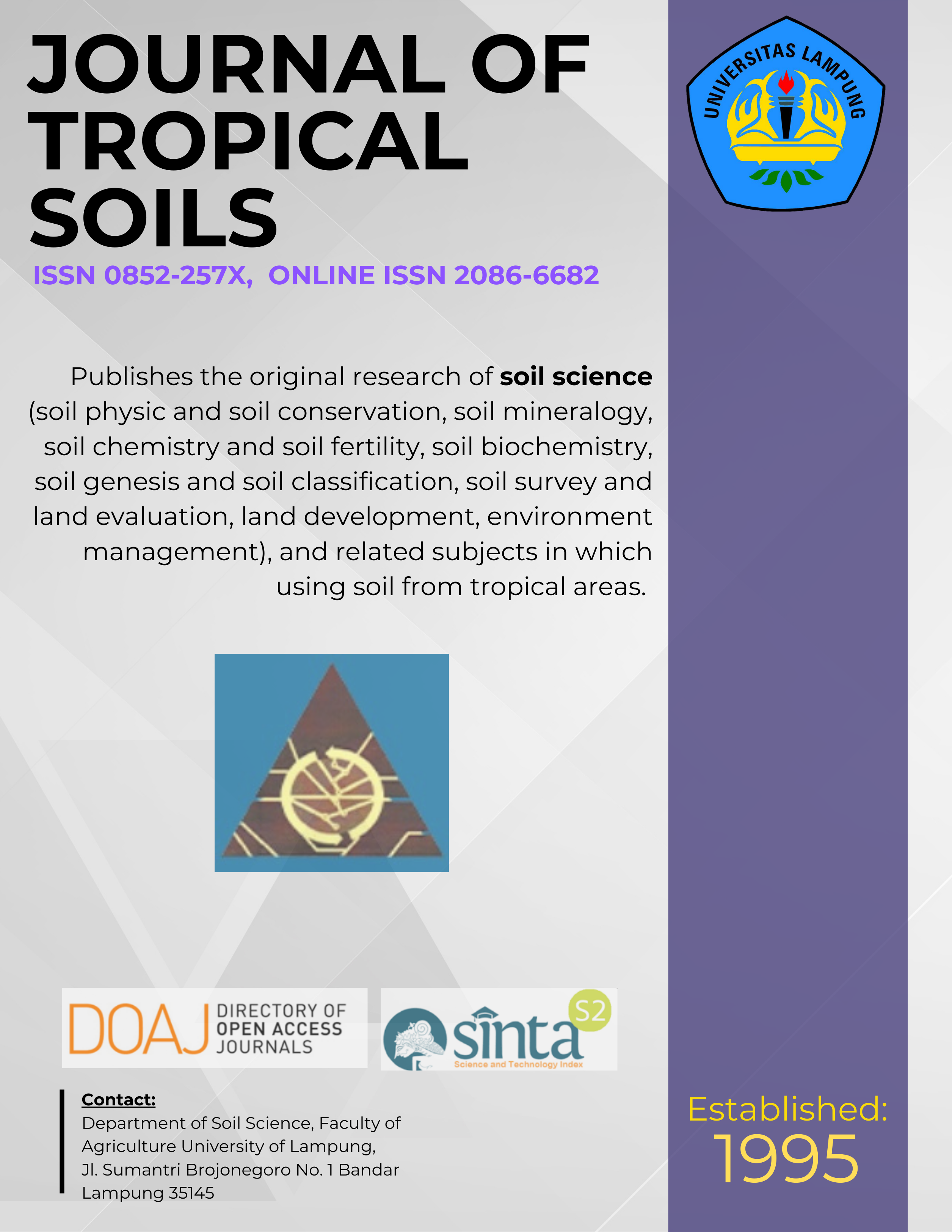Effectivity of Soil Amelioration on Peat Soil and Rice Productivity
Main Article Content
Abstract
Peat soil amelioration has important role on improvement of soil peat fertility such as on increasing soil pH, reducing organic acid and toxic ions, and also increasing nutrients availability. Soil amelioration with polyvalent cations (Fe Al Cu Zn) namely slag, lateritic soils, and river mud are effectively reducing harmful effect of phenolic acid. The objectives of the study were to determine the effect of soil amelioration on peat soil chemical properties, optimum temperature amelioran tras and dolomite to increase Si concentration in peat soil, also to determine the effect of soil amelioration on increasing crop productivity (both biomass and yield). The study was consisted of two sets of experiments, namely soil incubation in the laboratory and greenhouse experiment with 4 replications of CRD (complete randomized design) plot design. The result of the study showed that the application of slag and dolomite are significantly different to increase pH, base saturation, and (Ca, Mg) content, meanwhile slag application was more complex and stable on improving chemical properties of peat soil. Slag was also improving pH, KB, and Ca, Fe content as well as silica and ash. Tras and dolomite burning were not significantly different on increasing silica in peat soil. Slag application was significantly increased both dried crop biomass and yield on rice. The best ameliorant was slag compared to tras, dolomite, and mixed tras dolomit with slag.
Keywords: Ameliorant, organic acids, paddy, peat soil
Downloads
Article Details
Section
License for Authors
Authors who publish with this journal agree to the following terms:
- Authors retain copyright and grant the journal right of first publication with the work simultaneously licensed under a Creative Commons Attribution License that allows others to share the work with an acknowledgement of the work's authorship and initial publication in this journal.
- Authors are able to enter into separate, additional contractual arrangements for the non-exclusive distribution of the journal's published version of the work (e.g., post it to an institutional repository or publish it in a book), with an acknowledgement of its initial publication in this journal.
- Authors are permitted and encouraged to post their work online (e.g., in institutional repositories or on their website) prior to and during the submission process, as it can lead to productive exchanges, as well as earlier and greater citation of published work (See The Effect of Open Access).
License for Regular Users
Other regular users who want to cite, distribute, remix, tweak, and build upon author’s works, even for commercial purposes, should acknowledge the work’s authorship and initial publication in this journal, licensed under a Creative Commons Attribution License.

